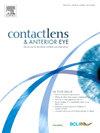欧洲近视管理的态度和策略在临床实践中的趋势。
IF 3.7
3区 医学
Q1 OPHTHALMOLOGY
引用次数: 0
摘要
背景:2015年至2022年间进行的调查显示,欧洲眼科医生越来越关注近视管理,尽管采取的有效策略各不相同。这项研究更新了2024年的研究结果,分析了2015年至2024年欧洲近视管理的态度和策略趋势。方法:通过专业机构以多种语言分发针对欧洲眼科医生的横断面在线调查。评估了不同近视控制策略对近视患病率的认知、感知效果和采用情况,以及不采用的原因。结果:在2015年至2024年期间,从欧洲从业者那里收集了总共3179份回复,代表了四个调查年的数据。结论:欧洲医生越来越多地采用循证近视控制策略,大多数国家报告了相对相似的管理实践。提供近视控制提高了患者的忠诚度和工作满意度。然而,诸如成本和公认的有限功效等障碍仍然阻碍着更广泛的采用。本文章由计算机程序翻译,如有差异,请以英文原文为准。
European trends in attitudes and strategies for myopia management in clinical practice
Background
Surveys conducted between 2015 and 2022 showed growing concern among European eye care practitioners about myopia management, though adoption of effective strategies varied. This study updates findings from 2024, analysing trends in attitudes and strategies for myopia management across Europe from 2015 to 2024.
Methods
A cross-sectional online survey targeting European eye care practitioners was distributed in multiple languages through professional bodies. It assessed awareness of myopia prevalence, perceived efficacy and adoption of different myopia control strategies, and reasons for non-adoption.
Results
Between 2015 and 2024, a total of 3,179 responses were collected from European practitioners, representing data across four survey years. Concern about pediatric myopia varied significantly in 2024 (P < 0.001), with Portugal reporting the highest concern (9.4 ± 1.0) and Sweden the lowest (5.9 ± 2.2). Orthokeratology combined with low-dose atropine was perceived as the most effective approach (60.8 ± 29.6), followed by solo orthokeratology (60.1 ± 25.0) and approved myopia control soft contact lenses (55.9 ± 23.4). Single-vision lenses (15.9 ± 22.9) and undercorrection (7.1 ± 16.6) were rated least effective. Since 2015, single-vision lens prescribing has declined, while myopia control spectacles and contact lenses, and combination therapies have increased. The major reasons preventing the prescription of myopia control methods in 2024 were cost (29.6 %), treatment availability (11.4 %) and inadequate information/knowledge (9.3 %). Factors such as patient age, refractive error, and parental myopia influenced treatment choices, with the factors being less influential in Russia compared to other countries (all p ≤ 0.001). All European countries reported that adopting measures to control myopia progression in 2024 were thought to improve patient loyalty (much more/more: 57.7 %) and improve job satisfaction (much more/more: 73.3 %), but it was perceived not to increase practice revenue (much more/more: 43.3 %).
Conclusions
European practitioners are increasingly adopting evidence-based myopia control strategies, with most countries reporting relatively similar management practices. Offering myopia control enhanced patient loyalty and job satisfaction. However, barriers such as cost and perceived limited efficacy still impede broader adoption.
求助全文
通过发布文献求助,成功后即可免费获取论文全文。
去求助
来源期刊

Contact Lens & Anterior Eye
OPHTHALMOLOGY-
CiteScore
7.60
自引率
18.80%
发文量
198
审稿时长
55 days
期刊介绍:
Contact Lens & Anterior Eye is a research-based journal covering all aspects of contact lens theory and practice, including original articles on invention and innovations, as well as the regular features of: Case Reports; Literary Reviews; Editorials; Instrumentation and Techniques and Dates of Professional Meetings.
 求助内容:
求助内容: 应助结果提醒方式:
应助结果提醒方式:


